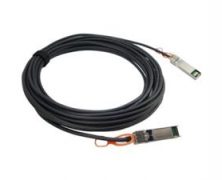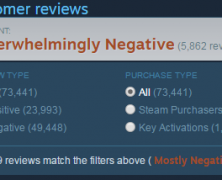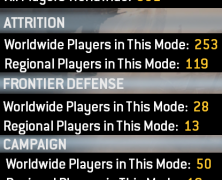Last week I had to head to one of our colocation sites to retrieve some hardware to be moved to another city, and to test out some new swank jank 10GbE switches. These new switches run over SFP+, which means making sure the switches are compatible with the transceivers on the cables. As soon as I discovered this was what was on the to-do list for the day, my stress levels immediately rose. See, SFP+ cables are great in theory. They’ve got a little PCB with a fancy clip, they do 10GbE, and… Well, that’s about it. It’s a cable. It is a conduit for electrons to move. What I hate most about SFP cables is the clip and tab. It’s truly awful design – if you break the plastic tab your only hope for disconnecting the cable is to get a small screwdriver or something similar into the latching mechanism. This is where switch and cable designers must want you to lose your temper. Switch designs, for some brilliant reason, have the ports of the SFP cables oriented such that the latches are facing one another on switches where there’s two rows of ports stacked one on top of another (or, at least the switches I’ve encountered). This means that if you make the mistake (or are forced to due to capacity) of connecting two SFP cables one on top of each other and break the tabs, they’re fused to the switch permanently for all intents and purposes. Depending on the design of the latching mechanism on the cable, there may very well be no feasible way to get a screwdriver or other tool into the gap. I know what you’re thinking. I must be doing it wrong. Like most hardware in IT, there’s...
Preorders are crap and you’re part of the problem
posted by Josh Folland
Back in the day, video game preorders were hugely beneficial. We didn’t have digital distribution – at least not on the scale we’ve come to love and hate. A preorder meant you went to your local EB Games, Gamestop, Future Shop or $preferred_local_retailer, they’d reserve a copy of the physical copy of the game for you so you’d be guaranteed to play it as soon as possible. I have fond memories of going to the mall at midnight to pick up highly anticipated titles like Halo 3 and then skipping class the next day because I stayed up all night playing (yeah, I was that kind of student). I’d get to meet all kinds of fans and members of the local gaming community while waiting in line, and in some ways it validated my decision: I wasn’t the only one crazy enough to do something like that. Event organizers would hand out flyers to their upcoming tournaments and gatherings, and everyone was nice and chummy. Ah, nostalgia. Since then, we’ve gotten our hands on better internet connections and more reliable digital distribution mediums like Steam, Origin, Battle.net, gog.com and plenty more. Along with this convenience came the advent of day-one patches, locked DLC being included in the main game’s files and all forms of DRM butchery consumers despise. This really started to ramp up around 2008-2009. Right around the same time, game developers saw the console market start to explode thanks to smash hit titles like Call of Duty 4: Modern Warfare, the aforementioned Halo 3, Gears of War, Assassin’s Creed and a wide variety of other franchises that pushed out yearly installments. PC gamers repeatedly got the short end of the stick. On the few-and-far-between occasions that a developer chose to publish their game...
Playlist-based Matchmaking is crap.
posted by Josh Folland
In preparation for Respawn’s highly-anticipated Titanfall 2 (dropping at the end of the month), I reinstalled its predecessor last week. The last time I had played Titanfall was November 2014, according to my Origin account. The game is highly mechanical and there are a lot of advanced tactics to brush up on. Being built on the Source engine (which itself was built from iD tech/Quake engine code), you’ve got full air control and momentum conservation in the form of bunnyhopping, on top of the already-excellent wall running and double jumping. All of this is promised to return in the sequel, so I figured why not re-master these techniques to get a bigger edge on the competition in Titanfall 2. I want to make one thing perfectly clear before I dive into the meat here: Titanfall is fun. One of the most fun FPS games I have ever played, in fact – there’s an excellent blend of tactics, movement, aim and general FPS skill that doesn’t often get to shine in such a broad spectrum in other games. With so many different ways to play, it certainly ticks the box for the competitive mantra “easy to learn, hard to master.” The gameplay is beautifully sculpted in such a way that you can only come to expect from the geniuses behind Call of Duty 4: Modern Warfare (the best Call of Duty title to date, I might add). It sounds cool, it looks cool, it’s fast-paced, there’s an extremely high skill ceiling However, nearly everything else about the game is crap. The netcode certainly leaves something to be desired – hit registration is lackluster, the tick rate (the rate at which the server updates the world with new information, ie: you shot the bad guy and he...



